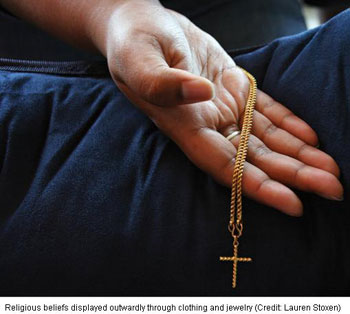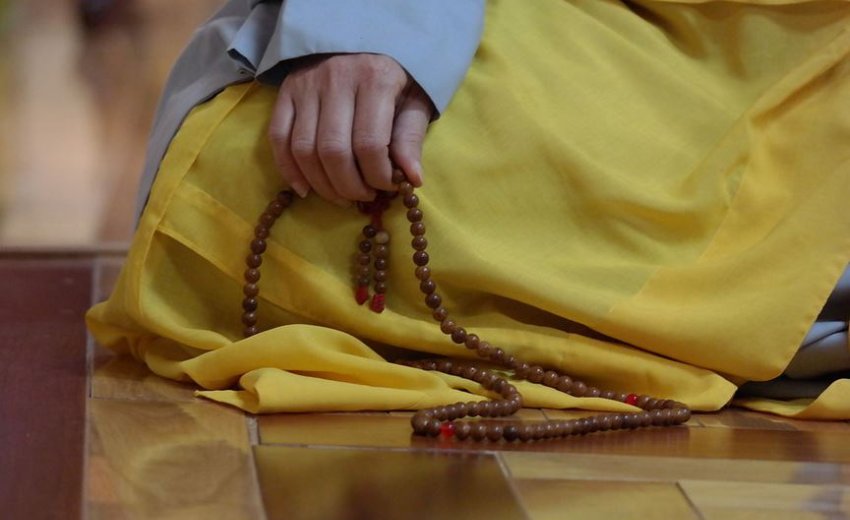 As small tokens of much larger beliefs, individuals who display outward religious symbols bear a reminder of their faith within.
As small tokens of much larger beliefs, individuals who display outward religious symbols bear a reminder of their faith within.
Paramveer Singh, a sophomore in the College of Arts & Sciences wears a turban as an outward sign of his belief in Sikhism, a monotheistic religion founded in northwestern India. Sikhism emphasizes loving God and mankind, earning an honest living and equal rights.
Founded 300 years ago, Sikhism established a way to disassociate from the tyranny and oppression of India's caste system, Singh said. Originally only kings and higher-class members wore turbans. Sikhs began to wear turbans to desegregate society's castes.
Singh said wearing a turban helps him connect with the principles he believes in about justice and equality.
Singh feels called to act in a respectful manner by wearing his turban. He said he is likely to be the only Sikh that individuals he comes into contact with meet. He wishes to represent himself and his faith well.
People inquire about his turban two to three times per month, Singh said. But the questions don't bother him. He said he appreciates when people ask about his turban because they show interest.
Singh started to wear a turban his freshman year of high school, he said. Sikhs can start wearing a turban whenever they wish. But practitioners who do not wear turbans are not looked down upon.
Women can wear turbans as well, but generally only orthodox practitioners decide to. Most women grow out their hair, he said.
As a non-denominational Christian, Gina George, a sophomore in the College of Health Sciences, said the cross she wears symbolizes Jesus giving up his life so she may live.
George said she has worn a crucifix around her neck since her parents first gave her one when she was a young girl. She initially wore it because her parents gave it to her, but she now does it because she desires to.
If she wore the crucifix because her parents demanded it, wearing it would lose its significance, she said.
"The value is not in the jewelry, just what it means to me. It's a comfort to have this around my neck," George said.
People don't generally ask George about the significance behind the crucifix because most already know it signifies Christianity, she said. But to George the crucifix has a much deeper significance than Christianity. To George, it is a reminder to daily live her faith and that Jesus gave up his life for her.
In order to practice her Islamic faith, Shazeen Harunani, a sophomore in the College of Arts & Sciences and president of the Muslim Student Association, wears the Hijab, the modest dress and headscarf worn by Muslim women.
Harunani said Muslims wear the Hijab to emphasize modesty.
"It's so people don't look at you for what you look like, but they look at you for who you are," she said.
Young women begin wearing the Hijab once they reach maturity, Harunani said. However, wearing the Hijab is a personal decision that not everyone becomes comfortable initially.
Harunani said she started wearing the Hijab her sophomore year of high school. She said she struggled to take wearing it seriously for two years.
"It wasn't something I was particularly excited about," she said. "Now that I have been doing it I really like it. Not only is it modest, but also a reminder to me too that I am Muslim, and this is what I'm supposed to do. This is how I'm supposed to act."
Harunani said many people are curious about the Hijab and she doesn't mind their questions. No one has discriminated against her for wearing it, she said.
By Brooke McEwen
Representing faith through various personal items

